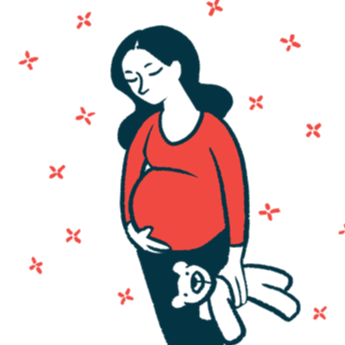For Pregnant MS Patients, No Added Risk of Infant Growth Deficits: Study
Data show C-section, early delivery 'significantly' more likely with MS
Written by |

Women with multiple sclerosis (MS) are not at a higher risk of their babies having growth deficits during pregnancy or after birth than individuals without the disease, a study suggests.
Yet, the data showed women with MS are significantly more likely to deliver their babies by cesarean section (C-section) and before term — at less than 37 weeks of gestation — compared with mothers who do not have the disease.
While the researchers noted that “most obstetricians do not consider it an ‘at-risk’ pregnancy” when multiple sclerosis patients have a baby, they say that “nonetheless, interdisciplinary pregnancy care and planning are warranted,” with preconception counseling recommended.
“We believe our study findings provide valuable information for MS patients during preconception counseling and [pregnancy] care,” the team wrote.
The study, “Fetal and post-natal growth in infants of mothers with multiple sclerosis: A case-control study,” was published in the journal Multiple Sclerosis and Related Disorders.
As MS occurs more frequently among women of childbearing age, the potential impact of pregnancy in the course of the disease, and vice-versa — including the effects on and by multiple sclerosis treatments — has been the focus of numerous studies.
Pregnancy complications in multiple sclerosis
Evidence suggests MS does not significantly increase the risk of most pregnancy complications. However, “some studies reported a possible reduction in mean birth weight and length, and a higher incidence of preterm delivery, mainly in relation to the exposure to [disease-modifying therapies (DMTs)] during pregnancy,” the researchers wrote.
There is limited information, though, on the growth parameters of babies before and after birth from women with MS versus those without the disease. Importantly, growth deficits at these stages can increase the risk of several conditions in later life. These include high blood pressure, type 2 diabetes, allergies, some forms of cancer, and neurological and cognitive impairment.
Now, a team of researchers in Turin, Italy, evaluated growth measures during the third trimester of pregnancy, at birth, and for up to 12 months of life among the offspring of mothers with and without MS.
The study included 211 women with MS and 384 healthy women, who served as controls. The controls were paired with patients for maternal age and parity, or the number of times a woman has given birth. All had delivered babies at a single Turin hospital from January 2006 to December 2019.
The researchers retrospectively analyzed these women’s data, as well as information on fetal, newborn, and infant parameters.
Most of the women with MS, who had stable disease with mild disability at pregnancy start, did not require treatment during pregnancy or withdrew DMTs before pregnancy. The two groups of women differed significantly only in terms of smoking, which was more common among those with MS (6.3% vs. 0.8%).
Results showed that no significant group differences were detected for all the fetal parameters analyzed, such as skull diameter, head and abdominal circumferences, and femur length. The femur is the long bone in the thigh, and is the longest and strongest bone in the body.
At birth, newborns from women with and without MS had similar gestational age, body weight and length, and head circumference. There also were comparable rates of low birth weight and small for gestational age babies in both groups.
Minor congenital, or birth, malformations were observed in two babies from MS patients (both not under DMTs) and in three babies born to the healthy controls.
The MS group showed a significantly higher rate of C-section (39% vs. 27.7%) and late preterm delivery, between 34 and 37 weeks of gestation (7.3% vs. 2.6%).
About 10% of C-sections in MS patients were indicated in the absence of obstetrical or neurological complications, suggesting a more “cautious attitude of the attending obstetrician than international guidelines and protocols” would suggest, the researchers wrote.
“A plausible explanation for the higher rate of late preterm birth is tobacco use, which was far higher among the women with MS than the controls” and “is associated with a greater risk of preterm delivery,” they added.
Data: fewer mothers with MS breastfeed
Trends of infant growth in terms of both weight and length were comparable between the two groups. Infants from mothers with MS showed a slightly greater head circumference at six months of life than those from controls, but this nonsignificant difference disappeared by age 1.
In addition, similar growth trends from birth to age 1 were detected for infants born to mothers with MS who breastfed, those who did not, and those in the control group.
“We believe that this reassuring finding needs to be shared with women with MS during preconception counseling,” the researchers wrote.
The observed lower proportion of mothers breastfeeding in the MS group (58.3%) relative to the 97.9% of those in the control group likely was related to the fact these patients “resumed or initiated DMT” following birth, the team wrote.
Moreover, no significant differences in fetal and infant growth were observed between women with MS who were on DMTs at the beginning of pregnancy, those who were not, and women in the control group.
These results highlight that “multiple sclerosis in pregnancy does not seem to affect fetal growth and [post-birth] development during the first year of the offspring life,” the researchers wrote.






